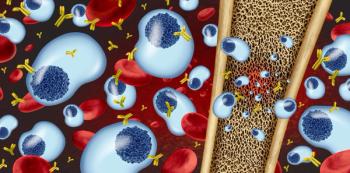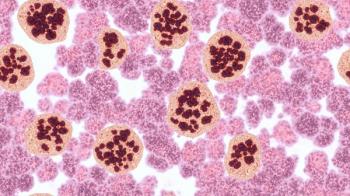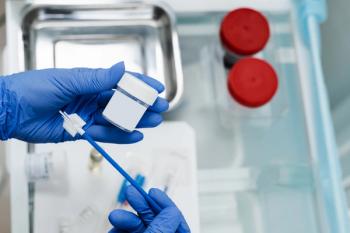Medication nonadherence is a common and complex problem, with data showing that patients do not take their medications as prescribed about 50% of the time.1
Nonadherence takes the lives of approximately 125,000 Americans and costs the health care system as much as $300 billion annually.2 Patient education is key to improving this challenge.
Patient Education
Patient education can increase adherence, reduce adverse effects, result in more favorable patient outcomes, and reduce health care costs. Patient education empowers individuals to take an active role in their health care by making informed decisions, adhering to prescribed medications, and recognizing complications early, increasing satisfaction and quality of life.
About the Author
Kathleen Kenny, PharmD, RPh, earned her Doctoral degree from the University of Colorado Health Sciences Center. She has more than 30 years of experience as a community pharmacist and works as a clinical medical writer based in Albuquerque, New Mexico.
With a deeper understanding of their diagnosis, the purpose and benefits of their treatment, potential adverse effects, and other medication-related information, patients are more likely to adhere to medication regimens and achieve better health outcomes. Common reasons for nonadherence include fear of adverse effects, high medication costs, lack of understanding, complex polypharmacy, and lack of disease symptoms.3
Pharmacists can review the statistics and severity of potential adverse effects with the patient and provide tips to reduce the likelihood of those effects. They can also help patients find cost savings or lower-cost alternatives when cost is a factor in nonadherence. Through education, pharmacists can ensure patients understand when, why, and how the medication will work. Patient education plays a critical role in medication safety. It reduces the possibility of medication errors and adverse effects and encourages patients to ask questions, which results in improved health outcomes.4
By clearly communicating dosage, timing, administration methods, and missed dose instructions, pharmacists can reduce the risk of medication misuse. Accurate medication administration reduces medication errors and adverse effects, and education on adverse effects can enable patients to recognize and report these promptly to reduce serious complications. The same holds true for drug-drug, drug-food, and drug-disease interactions.
Strategies for Effective Patient Education
Patient education is crucial in providing pharmacy care. Understanding different learning styles and communicating clearly and effectively can help ensure better patient comprehension and engagement.
Significantly, patients differ in their needs and expectations for education. Therefore, patient education must be individualized based on patient requirements such as health literacy, language preferences, and cultural background. Although a minimum amount of information is essential for safety and adherence to medication, information beyond that must be individualized to the patient. By encouraging patients to ask questions or using a teach-back method, patients can comfortably guide the consultation process.
The importance of clear, concise, patient-centered communication cannot be overstated. When counseling patients, use active listening, eye contact, and body language that suggests interest and empathy. Actively address patient concerns, preferences, and potential barriers to the safe use of medications.
Creating a supportive environment is also essential for promoting trust and rapport, fostering effective therapeutic outcomes. This applies to both the physical environment and specific interpersonal skills. Provide a comfortable and accessible environment that ensures privacy and confidentiality. Try to minimize interruptions and distractions such as noise and clutter. Incorporate natural elements such as a plant and/or wicker basket, and keep some tissues and small bottles of water nearby to help patients manage stress and anxiety.5
Using technology can also boost patient education. Patient education can now be delivered through multimedia, such as text messaging, videos, and interactive simulations, in addition to the traditional provider counseling and written formats. Text messaging can be used to improve adherence to medication regimens, and videos can provide demonstrations and education on medication. Another useful technology is a translation application, used to help facilitate communication with non-English-speaking patients.
Barriers to Implementation
Pharmacist-led patient education faces several barriers that hinder patient counseling and information exchange, negatively impacting patient understanding and medication adherence. High workloads, intense metrics, and long lines in pharmacies lead to short, rushed patient interactions. Pharmacies are often short-staffed, making it difficult for the pharmacist to spend sufficient time with patients.
Between the limited space in pharmacies and the fact that they are high-traffic areas, it is difficult to find a place to have sensitive, confidential discussions with patients. This may negatively affect a patient’s willingness to approach pharmacists with questions and concerns. Furthermore, distractions such as noise, interruptions, and other patients may interfere with the pharmacist’s ability to focus on the patient and for the patient to absorb the information.
Conclusion
Medication nonadherence remains a significant threat to patient safety, outcomes, and health care costs, but pharmacists are uniquely positioned to address this challenge through effective patient education. By combining clear communication, individualized counseling, supportive environments, and the strategic use of technology, pharmacists can empower patients to understand their therapies better, overcome barriers to adherence, and achieve optimal health outcomes. Investing time and resources in patient education ultimately strengthens the pharmacist-patient relationship and advances clinical and economic goals.
REFERENCES
1. Brown MT, Bussell JK. Medication adherence: WHO cares? Mayo Clin Proc. 2011;86(4):304-314. doi:10.4065/mcp.2010.0575
2. Medication adherence: taking your meds as directed. American Heart Association. Updated January 18, 2024. Accessed September 3, 2025. https://www.heart.org/en/health-topics/consumer-healthcare/medication-information/medication-adherence-taking-your-meds-as-directed
3. 8 reasons patients don’t take their medications. American Medical Association. February 22, 2023. Accessed September 3, 2025. https://www.ama-assn.org/practice-management/ama-steps-forward-program/8-reasonspatients-dont-take-their-medications
4. Yeh MY, Wu SC, Tung TH. The relation between patient education, patient empowerment and patient satisfaction: a cross-sectional-comparison study. Appl Nurs Res. 2018;39:11-17. doi:10.1016/j.apnr.2017.10.008
5. 5 practical considerations in the counselling process. In: Counselling for Maternal and Newborn Health Care: A Handbook for Building Skills. World Health Organization; 2013. Accessed September 3, 2025. https://www.ncbi.nlm. nih.gov/books/NBK304189/




















































































































































































































